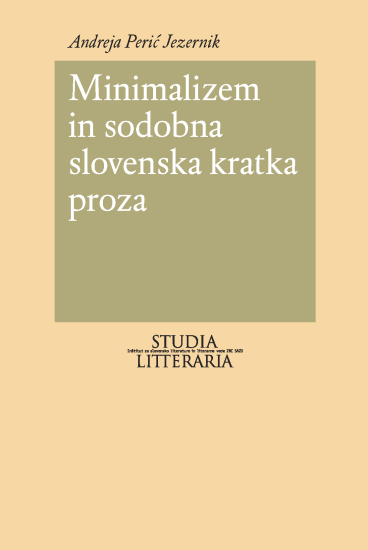
Author:
Andreja Perić Jezernik
Year:
2011
Minimalistic aesthetics and minimalism are reflected on in the following art forms: fine arts, music, architecture, design, dance, fashion, and literature. Within minimalism, all these art forms attempt to simplify expression and deny artificiality, embellishment, and illusionism in their representation, and they all in their own way bring forward the medium they use for expression. In all these art forms, the minimalistic aesthetics appeared in the form of a trend or art style in the second half of the 20th century, more specifically, from 1960s onwards, and continues to fecundate and intertwine with other trends even after the end of the initial radical phase.
The beginnings of minimalism in short prose can be traced back to the American literature at the end of 1960s, more specifically, to Raymond Carver, who is believed to be its pioneer. His short prose has also indirectly co-formed the Slovenian prose that displays minimalistic features. However, minimalism is related to the Slovenian literature only from 1990s onwards with the publication of short prose collections that expressed the minimalistic aesthetics or poetics to a somewhat stronger degree. In the typological sense, literary minimalism combines the following characteristics: an all-encompassing reductionistic tendency; a subject reduced to a minimum self; a world of minimum appearance; a frame of mind/atmosphere; a theme of everyday life; an openness towards the dialogue form by imitating colloquial language of a modern “urban” man; a selection of significant surface details that represent minimalistic symbolism as a sign of something inexpressible; a minimalistic moment of truth; and a minimalistic or impoverished “stream of consciousness” or stream of thought. From a historical point of view, minimalism is a literary current or trend that followed postmodernism. Among the short prose genres, minimalism is predominantly found in short story, modern short story, and modern novelette, as their structural requirements make them an ideal medium for expressing a minimalistic representation of everyday postmodern world. The following authors are discussed in more detail: Raymond Carver, Drago Jančar, Vinko Möderndorfer, Nejc Gazvoda, Andrej Blatnik, Igor Zabel, Dušan Čater, Aleš Čar, Polona Glavan, and Maruša Krese.
-
Author
-
Publishing House:
Založba ZRC
-
Publisher
-
ISBN
978-961-254-295-5
-
Year
2011
-
Series
Language(s)
-
Specifications
paperback 15 × 21 cm 184 pages
-
E-publications
-
Permalink